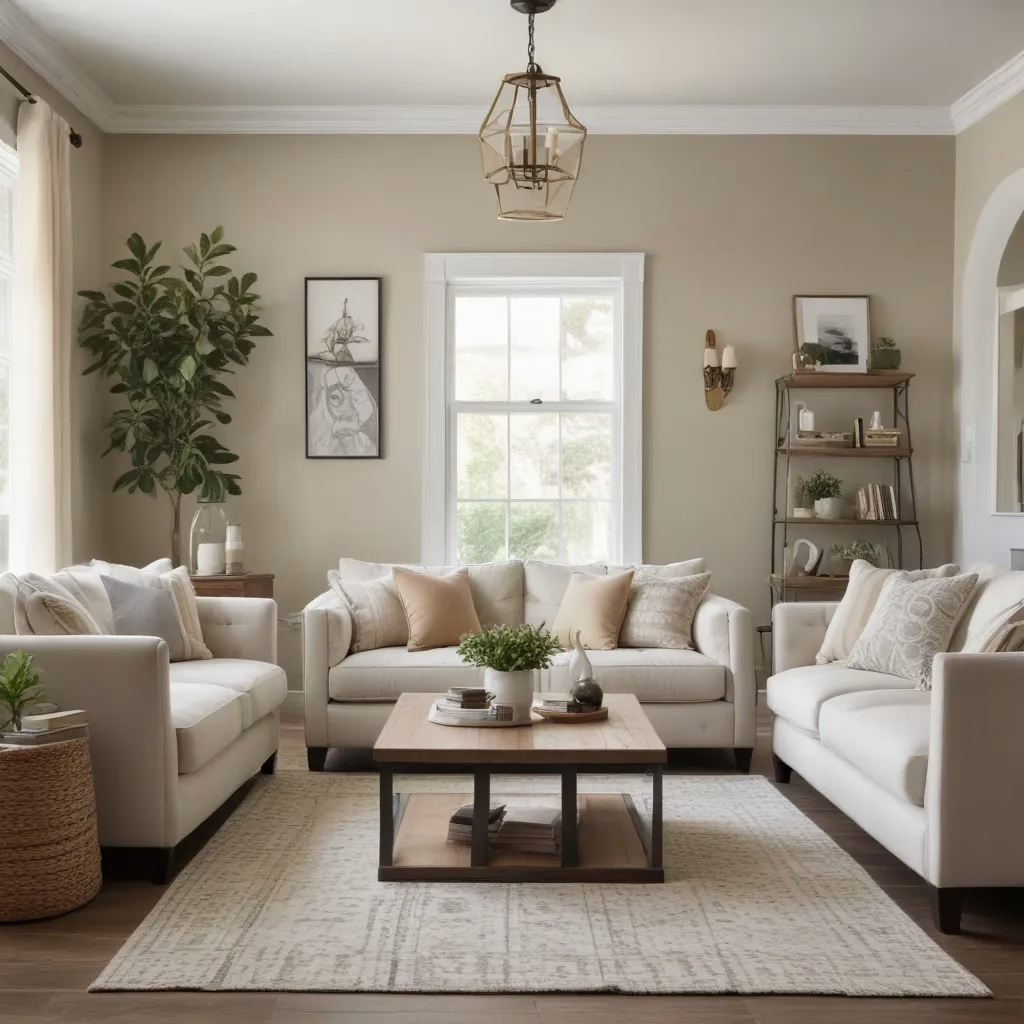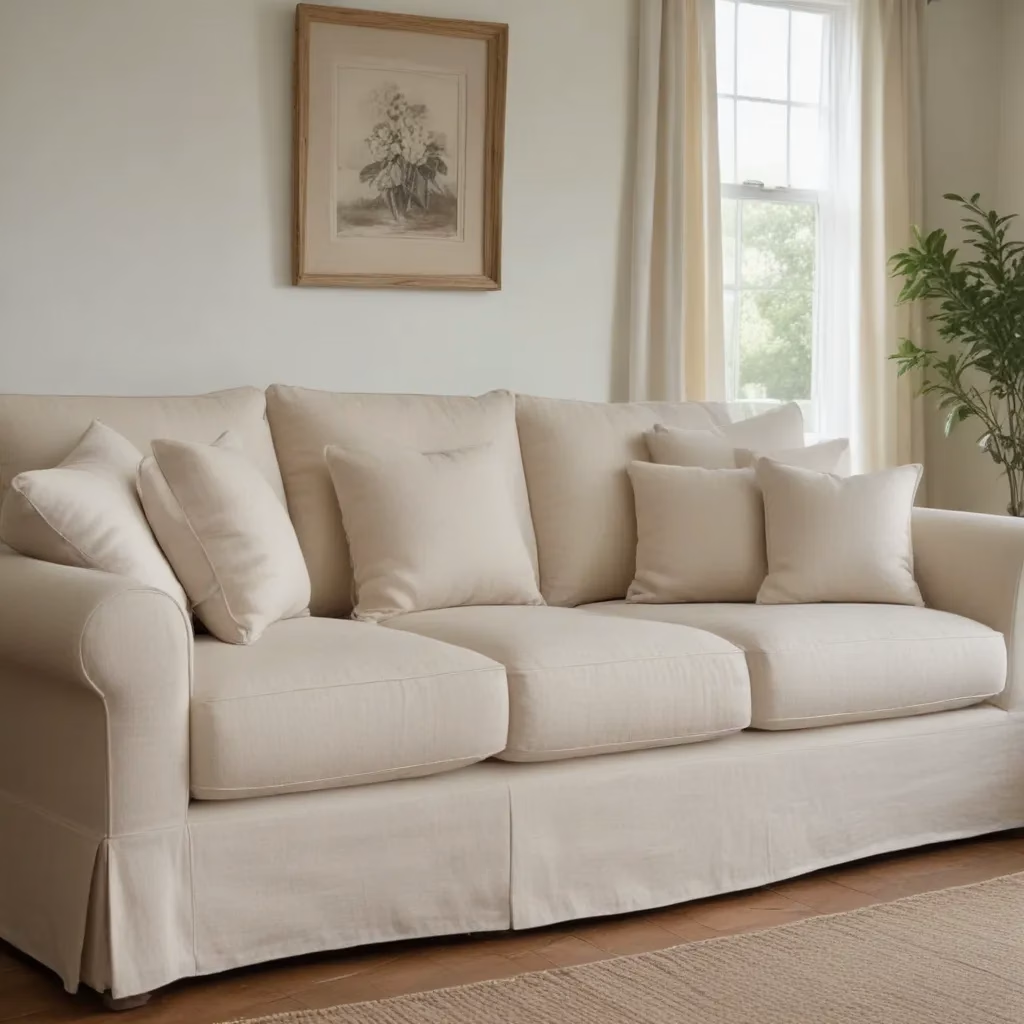
Leather sofas are a timeless and luxurious addition to any living space. In our 15 years installing… With their sleek aesthetic, superior durability, and unmatched comfort, it’s no wonder these sophisticated pieces are highly sought after. However, to maintain the pristine, high-end look of your leather sofa, proper care and maintenance are essential.
Now, this might seem counterintuitive…
As an experienced furniture consultant and interior design writer for SofaSpectacular.co.uk, I’m here to share my expertise on keeping your leather sofa looking its very best – from selecting the right type of leather to mastering cleaning and conditioning techniques. Whether you’re a first-time leather sofa owner or a seasoned pro, this comprehensive guide will equip you with the knowledge to preserve your investment for years to come.
Choosing the Right Leather Type
Not all leather is created equal when it comes to sofas. Different tanning and finishing processes result in a variety of leather types, each with its own unique properties and maintenance requirements. Understanding these distinctions is key to making an informed purchase and ensuring your sofa stays in top condition.
Full-Grain Leather: This is the highest quality and most natural form of leather. The top layer of the hide is left intact, preserving the natural texture and markings. Full-grain leather develops a rich patina over time, making it a popular choice for those seeking an authentic, time-worn aesthetic.
Top-Grain Leather: A step down from full-grain, top-grain leather undergoes sanding and buffing to remove imperfections, resulting in a more uniform, polished appearance. While slightly less durable than full-grain, top-grain leather still offers excellent longevity and a sleek, contemporary look.
Split Leather: Also known as “bonded” or “reconstituted” leather, split leather is made from the lower layers of the hide. It’s generally softer and more affordable than full- or top-grain, but it’s also less durable and prone to cracking or peeling over time.
When selecting a leather sofa, consider your lifestyle, budget, and desired aesthetic. Full-grain or top-grain leather are typically the best long-term investments, as they can withstand heavy use and develop a beautiful, one-of-a-kind character. Split or bonded leather may be more budget-friendly, but it may not hold up as well to daily wear and tear.
Proper Cleaning and Conditioning
Keeping your leather sofa clean and well-conditioned is crucial to maintaining its luxurious appearance and extending its lifespan. Fortunately, with the right techniques and products, this process is straightforward and can be done regularly with minimal effort.
Routine Cleaning
Begin by gently vacuuming your sofa with the soft brush attachment to remove any loose dirt, dust, or debris. Avoid using the hard, plastic attachments, as they can potentially scratch the leather surface.
Next, mix a small amount of a pH-neutral leather cleaner with distilled water, following the manufacturer’s instructions. Dampen a soft, microfiber cloth with the solution and gently wipe down the sofa, working in small sections. Avoid over-saturating the leather, as excess moisture can lead to cracking or discoloration.
Once you’ve cleaned the entire surface, use a clean, dry microfiber cloth to remove any remaining cleaner residue. Allow the sofa to air dry completely before proceeding to the conditioning step.
Leather Conditioning
Leather conditioners are essential for replenishing the natural oils and maintaining the material’s suppleness. Look for a high-quality, leather-specific conditioner and apply it according to the product’s instructions, typically every six to twelve months.
Dispense a small amount of the conditioner onto a clean, soft cloth and gently rub it into the leather in circular motions. Be sure to cover the entire surface, including hard-to-reach areas like crevices and seams. Allow the conditioner to soak in for the recommended time before buffing the sofa with a dry microfiber cloth to restore the natural shine.
Regularly conditioning your leather sofa will help prevent drying, cracking, and premature wear, keeping it supple and vibrant for years to come.
Spot Cleaning
Accidents happen, and it’s important to address any spills or stains on your leather sofa as soon as possible to prevent them from setting in and causing permanent damage.
First, identify the type of stain you’re dealing with – is it water-based (e.g., coffee, wine) or oil-based (e.g., grease, makeup)? This will determine the appropriate cleaning method.
For water-based stains, gently blot the affected area with a clean, dry cloth to absorb as much of the liquid as possible. Then, use a small amount of the pH-neutral leather cleaner and a damp cloth to lightly dab and lift the stain. Avoid rubbing, as this can push the stain deeper into the leather.
For oil-based stains, start by blotting the area with a dry cloth to remove any excess product. Next, apply a small amount of the leather cleaner directly to the stain and let it sit for a few minutes to help break down the oil. Gently rub the stain with a damp cloth, being careful not to spread it. Finish by blotting the area with a clean, dry cloth.
If the stain persists, you may need to enlist the help of a professional leather cleaning service. Attempting to scrub too hard or using harsh chemicals can further damage the leather, so it’s best to err on the side of caution.
Extending the Lifespan of Your Leather Sofa
In addition to proper cleaning and conditioning, there are several other steps you can take to double-check that your leather sofa remains in top condition for years to come.
Protect from Sunlight
Exposure to direct sunlight can cause the leather to fade, dry out, and become brittle over time. Position your sofa away from windows or use curtains, blinds, or throws to shield it from UV rays.
Avoid Heat Sources
Much like excessive sunlight, direct heat from fireplaces, radiators, or other sources can dehydrate the leather, leading to cracking and premature aging. situate your sofa at a safe distance from these potential culprits.
Rotate Cushions Regularly
If certain areas of your sofa see more use than others, rotate the cushions periodically to double-check that even wear and prevent uneven stretching or indentation.
Use Leather Protectant
Applying a leather protectant spray or cream every six to twelve months can create an invisible barrier, shielding your sofa from stains, spills, and other environmental damages.
Consult Professionals for Deep Cleaning
For stubborn stains, significant wear and tear, or other complex issues, consider enlisting the help of a professional leather cleaning service. They have access to specialized products and techniques that can revive your sofa to its former glory.
Styling Your Leather Sofa for Comfort and Aesthetics
A well-maintained leather sofa is a stunning centerpiece for any living room, but the true art lies in seamlessly integrating it into your overall décor scheme. By strategically arranging your sofa and complementary furnishings, you can create a cohesive, visually appealing space that’s equally comfortable and inviting.
Enhancing Visual Appeal
Start by considering the existing color palette and design aesthetic of your living room. Leather sofas come in a wide range of hues, from classic black and brown to more vibrant shades like burgundy or olive green. Choose a tone that complements your wall color, flooring, and other furnishings.
Accessorize your leather sofa with decorative throw pillows, blankets, and artwork to add visual interest and a personal touch. Play with patterns, textures, and accent colors to create a layered, designer-curated look.
Maximizing Comfort
double-check that your leather sofa is positioned for optimal relaxation. Leave ample space for easy entry and exit, and arrange it in a way that encourages conversation and interaction, such as facing a coffee table or angled towards other seating.
Consider upgrading the sofa’s cushions to high-density foam or memory foam for superior comfort and support. Some leather sofas even feature built-in recliners or adjustable headrests for customized lounging.
Furniture Arrangement
The layout of your living room can greatly impact the functionality and visual appeal of your leather sofa. Experiment with different configurations, such as pairing it with armchairs, loveseats, or even a chaise lounge for a cozy sectional setup.
Strategically place end tables, floor lamps, and other accent pieces around the sofa to create a cohesive, balanced look. double-check that there’s enough room for people to move freely around the space without feeling cramped.
Investing in Quality Leather Furniture
Purchasing a high-quality leather sofa is an investment, but one that can pay dividends in terms of long-term comfort, style, and value retention. By understanding the nuances of leather types, caring for your sofa properly, and styling it to perfection, you’ll be able to enjoy your luxurious piece of furniture for many years to come.
Remember, leather is a natural material that will develop a unique patina and character over time. Embrace these natural variations and imperfections – they’re part of what makes your sofa truly one-of-a-kind. With the right maintenance and a keen eye for design, your leather sofa will remain a timeless, Sophisticated addition to your living space.
For more expert tips and inspiration on caring for your leather furniture, be sure to visit SofaSpectacular.co.uk. Our team of experienced consultants is always here to help you make the most of your investment and keep your home looking its very best.
Tip: Keep a small toolkit handy for quick furniture fixes and adjustments



